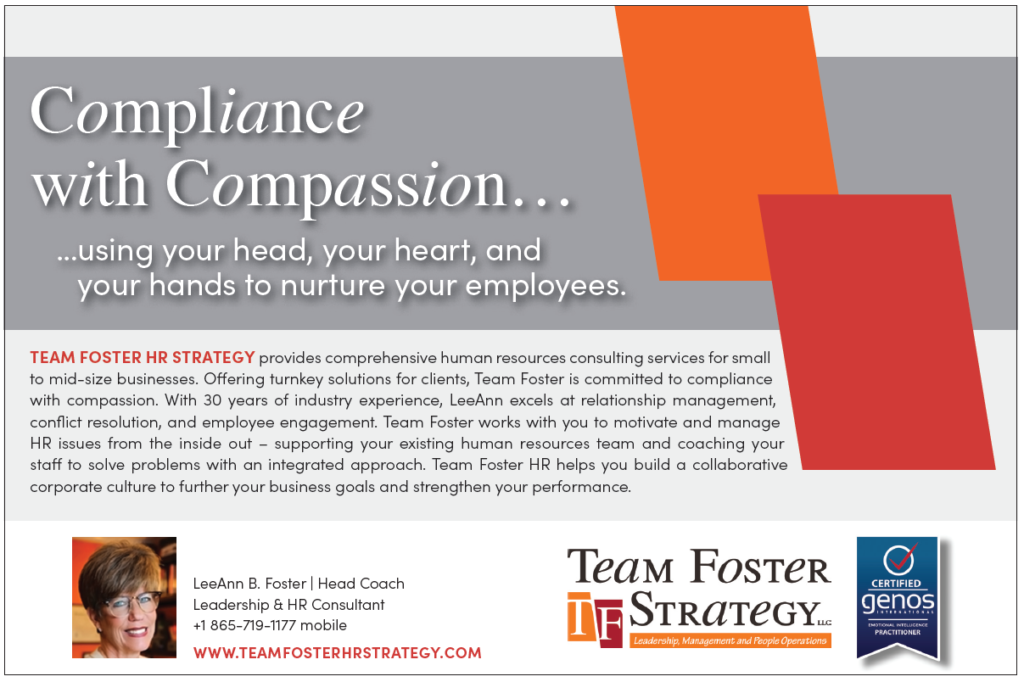By LeeAnn Bailes Foster
Every program or project needs a target. Do you agree? If you do, please read on.
What is the target for your first day of orientation with your new team members? Is it to make it to lunch without anyone in the New Hire Class quitting? NO! Your target should be that the new team member brags and brags to his family at dinner that evening about how very meaningful the day of orientation was and how excited he is to begin his career with your organization.
How do you get there? During this article you will how to make your new hires’ first powerful rememberable (for position reasons) and powerful (for retention reasons). Did you know that one of the first retention strategies is orientation? Crazy, isn’t it? Your new team member will begin forming her view of your organization during the recruitment process; however, her view will be solidified during the orientation and on-boarding programs.
For the purpose of this article, let’s clarify the difference between orientation and on-boarding. In my professional opinion, orientation is part of the on-boarding process.
Orientation is the first day (or up to a week) of the team member’s employment experience. This article will supply you with everything you need to know and do during your new hire orientation program to set the hook!
On-boarding refers to the first couple of weeks (or to a year) when the new team member is fully trained and ready to be productive. Perhaps the next article can cover Championship On-boarding.
Below are a few statistics that prove that your time reading this article will be well spent:
- Only 10% of companies do a good job of on-boarding. Tragic!
- 33% – 67% leave the company within 12 months. This is a ZERO production rate.
- Companies that do a great job at orientation have employees that are twice as prepared for the job.
- A solid, purposeful program increases employee engagement which decrease turnover.
Have you ever heard the statement, “Every system is perfectly designed for the results it gets.” So goes with your Orientation Program. Did you want new team members who are confused, bored, and frustrated at the end of the first day or do you want folks itching to come back the next day to see what is instore for them? After reading this article, you will have the tools you need to make raving fans out of your new team members. What a GREAT retention tool?
First things first – at least one leader from your company needs to make a connection with the new hire. By connection, I am referring to more than knowing the person’s name and job title. I mean spending enough time one to one to know what interests the individual. Encourage supervisors to keep talking to the new hire until they find a shared interest or two.
There are 5 crucial steps to developing a successful orientation program.
- Pre-Boarding – defined as the period from when the offer letter is received to Day One on the job.
- All of us fear uncertainty. New hires are worried about three things: 1. New physical spaces, 2. New people and relationships, and 3. New roles and responsibilities.
The curb the fear of uncertainties include the following in your offer letter: where to park, time to start, street address, how to access the building, the dress code. 1st day lunch plans, who to ask for upon arrival, and what door to enter.
As for anxiousness regarding new meeting new people and building new relationships, ask your team to connect with the new hire on Linked In, share information about the team and key people, assign a “WorkFriend”, share the team calendar, and as the leader, share a presentation titled “All About Me!”
How can we help the new hire class feel better about the new role and responsibilities – give each a First Day and first week schedule of events , give a project update, set-up technical equipment (phone, computer, etc.), share the training schedule, and share with each individual the Career Path of his/her position.
- Communication on Day 1 – start off on a STRING note. Be prepared.
- Make sure communication is clear and timely. Not being prepared for a New Hire Class sends the message that the new team members are not a priority, that your organization does not have it together, and that the new class members are an intrusion.
- The WorkFriend should greet the new team member at the front door or in the parking lot upon arrival and stay readily available throughout the 1st day.
- Schedule start time no earlier that 10:00 am to give the supervisor and team time to get started with their day. Mondays are Mondays all day long. Schedule 1st Days on Wednesdays. The workplace seems to settle down a little by then.
- Ensure the workspace is ‘work ready’. Provide essential office supplies.
- Decorate the workspace with a welcome sign.
- Always have a 1st Day surprise: a gift, an ice cream treat, candy, etc. Take note in the interview process what the new team member likes OR call a family member or friend.
- Make sure communication is clear and timely. Not being prepared for a New Hire Class sends the message that the new team members are not a priority, that your organization does not have it together, and that the new class members are an intrusion.
- Organizational & Personal Identity – connect the new hire with the vision, mission, and values of your company.
- The teach about the organizational identity, talk about the past, present, and future of the organization.
- As for personal identity, make time to affirm the abilities, reaffirm why the person was hired, and show how the new role aligns with the vision, mission, and values.
- Handout some organizational swag with the new hires name on it!
- Send Belonging Cues & Foster Emotional Connections
- Show a welcome video from the President/CEO.
- Send a welcome email with a picture and bio of every team member including the new hire.
- Ask team members to drop by the new team member’s workspace to introduce themselves.
- Don’t forget to assign the WorkFriend – email me, LeeAnn, if you need a WorkFriend Program – got one for you!
- Make sure lunch plans are made.
- At the end of the day, CELEBRATE good times. Tell the new team member you are so happy to have him join the team and are looking forward to tomorrow and beyond!
- Walk out together!
- Role Clarification – SO important. Only 50% of employees know what is expected of them.
- Review the job description. Talk through each bullet point and answer questions.
- Set priorities together. When managers help set priorities, engagement increase by 38%.
- Share the On-boarding Plan.
- Check-in frequently. These meetings could be your weekly 1-2-1 meetings.
- Explain the evaluation process. Share the evaluation tool.
- Set a Team Meeting on the 1st day to discuss the new team member’s role and each team member’s role.
- Discuss the Rules of Engagement (expectations.)
- Give the new team member a list of ‘Tings to Do’ during the first week to get some small wins.
- Start to create the new team member’s Individual Development Plan. The new person will drive the plan – the supervisor will ride along in case she is needed.
In conclusion, the ultimate target is “What do you want the New Hire to say to her family and friends after the 1st day? The main thing is to make a connection ASAP!

